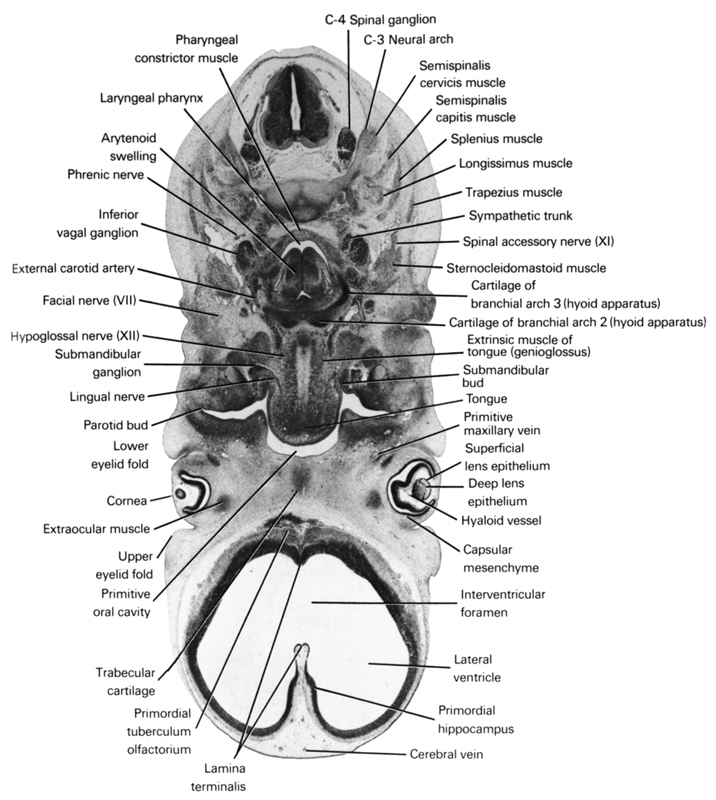
A section through the extrinsic tongue muscles and hyoid apparatus (second and third arch cartilages).
Observe:
1. The lamina terminalis and primordial olfactory bulb of the telencephalon.
2. The lens epithelium.
3. The eyelid folds beginning to cover the cornea.
4. The parotid and submandibular buds originating from the oral cavity epithelium.
5. The submandibular (parasympathetic) ganglion on the lingual branch of the mandibular nerve as it courses into the tongue.
Keywords: C-3 neural arch, C-4 spinal ganglion, arytenoid swelling, capsular mesenchyme, cartilage of branchial arch 2 (hyoid apparatus), cerebral vein, cornea, deep lens epithelium, external carotid artery, extraocular muscle, extrinsic muscle of tongue (genioglossus), facial nerve (CN VII), hyaloid vessel(s), hyoid, hypoglossal nerve (CN XII), inferior ganglion of vagus nerve (CN X), interventricular foramen, lamina terminalis, laryngeal pharynx, lateral ventricle, lingual nerve, longissimus muscle, lower eyelid fold, parotid bud, pharyngeal constrictor muscle, phrenic nerve, primitive maxillary vein, primitive oral cavity, primordial hippocampus, primordial tuberculum olfactorium, semispinalis capitis muscle, semispinalis cervicis muscle, spinal accessory nerve (CN XI), splenius muscle, sternocleidomastoid muscle, submandibular bud, submandibular ganglion, superficial lens epithelium, sympathetic trunk, tongue, trabecular cartilage, trapezius muscle, upper eyelid fold
Source: Atlas of Human Embryos.
